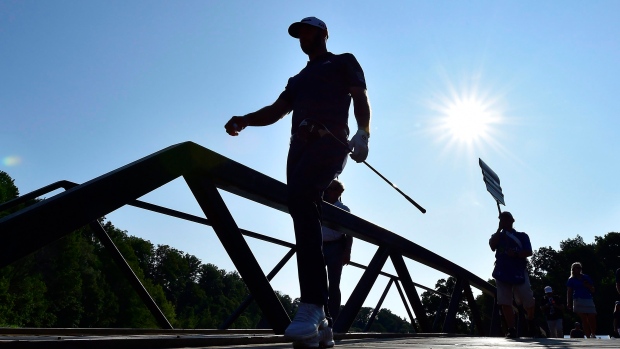Jul 30, 2018
A fond farewell to Glen Abbey
The Jack Nicklaus-designed golf course has been the stage for some wonderful theatre over the years, Bob Weeks writes.
By Bob Weeks

If this is indeed the final time the RBC Canadian Open is played over the fairways of the Course That Jack Built, it will exit with a lot of great memories, the latest being the victory on Sunday by the world’s No.-1 ranked golfer Dustin Johnson.
Golf Canada’s future plans don’t include Glen Abbey at the moment. It intends to move the tournament around to older, classic courses in Southwestern Ontario. Hamilton G&CC is next and, if deals get finalized, it will be followed by Mississaugua G&CC and then St. George’s G&CC.
The governing body will keep the Glen Abbey door ajar just a fraction in case it needs a last-minute home down the road, presuming, of course, that the course hasn’t been turned into homes as owner ClubLink would like.
Chances are, however, that this is it; that the Jack Nicklaus-designed course once built to be the permanent home of the RBC Canadian Open has said farewell.
Glen Abbey has served as a wonderful host. It’s well built for viewing with lots of spectator mounds and Nicklaus’s famous hub system that allows fans to see lots of action without moving too far.
But it’s also become somewhat dated and doesn’t provide as much of a challenge as it once did. The 17th hole is a good example. When the course opened, it was a tall order to avoid the fairway bunkers on the left side of the hole. Now they are rarely in play, with golfers taking a line over a tree on the right and ending up down in front of the green. Three years ago, Jason Day had 28 yards left for his second shot on the 421-yard hole.
The 16th and 18th holes, par 5s on the final stretch, have provided great theatre, but are also ripe for the picking. When David Frost won the Canadian title in 1993, his second shot into the 18th was with a five-wood. Johnson said on Saturday that he hit a nine-iron for his second shot there. On Sunday, it was a wedge.
Like every course on the PGA Tour, some loved Glen Abbey, others not so much. Curtis Strange, a two-time winner, was, not surprisingly, a big fan. Tom Watson, who played two Opens at the Abbey, wasn’t big on the course.
In spite of all that, the Abbey has been the stage for some wonderful theatre over the years.
Greg Norman held off Nicklaus and Nick Price (making his first PGA Tour start) to win in 1984 with a great closing stretch. Tiger Woods hit one of his most famous shots, a six-iron from the bunker on 18, to win in 2000. Vijay Singh broke the hearts of a nation with his playoff win over Mike Weir in 2004.
It’s also been the scene of some bizarre moments. In 1983, while playing a frustrating third round, Andy Bean left a birdie putt on the 15th hole short. Rather than just tap in, he bent down, turned his putter around and knocked the ball in using the end of his club like a pool cue. Later he learned his move was a rules violation that cost him an extra two shots and he signed for a 77.
On Sunday, Bean came out and caught fire, blazing the Abbey to a course-record 62 (a record which still exists) and missed getting into a playoff with eventual champ John Cook and Johnny Miller by – you guessed it – two shots.
In 2009, the same par-3 15th hole was the stage of some remarkable shot-making as four different players made holes-in-one, each winning a new car. The fourth one of those, by Leif Olson, took a bizarre route as it caromed off another player’s ball and ended up in the bottom of the cup.
There are other ways the Abbey has played a part in Canadian golf. It was where a lot of Canada’s top players first saw professional golf. As a kid, Mike Weir went to a junior clinic at the course during one Open and at the end scrambled to grab some of the golf balls the players used.
As a teenager, Mackenzie Hughes caddied in the pro-am there and ended up in Weir’s group. He said he was the worst caddy for his amateur golfer as he spent most of the day following Weir and asking him question after question.
Glen Abbey has also played a role in developing Canadian golf financially. Golf Canada, then the Royal Canadian Golf Association, sold the course in 1998 for $40 million, money that has been used over the years to fund a variety of programs and, on occasion, keep the governing body afloat during the lean years.
Millions from that sale still sit in the bank, collecting interest. There’s not telling where Canadian golf would be without some of those funds.
No matter the opinion of the course, Glen Abbey has been a constant in Canadian golf. For better or worse, it’s always been there, always provided a home and a stage.
Whatever its next chapter is, whether it continues to operate as a golf course or becomes developed land, a lot of memories will live on.
